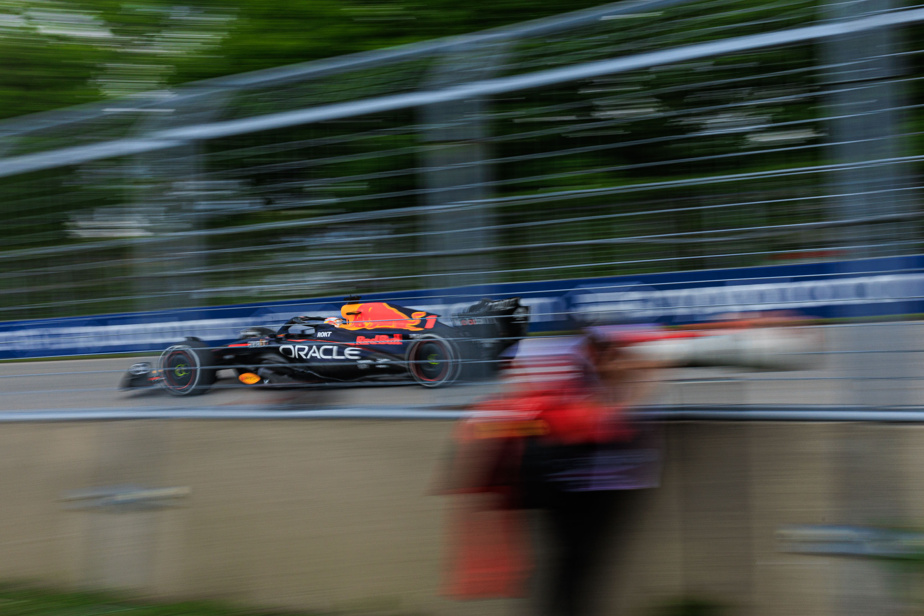Like every year, a few days before the Canadian Grand Prix, The Press make a call to François Dumontier. We talk about improvements and new features, whether on the circuit, in the stands or behind the scenes.
This year, Dumontier has a lot to tell us about the environment and sustainable development. “It’s a subject that is discussed on a daily basis,” he maintains. When we think about something, when we make decisions, now, that’s part of it. »
“At the level of the International Automobile Federation (FIA), there are star programs awarded to events sanctioned by the FIA,” he explains. We worked according to one of the programs and we should obtain, before the event, two stars from the FIA [sur une possibilité de trois]. »
In terms of recent improvements, the promoter notes the reduction in the number of generators used at the Grand Prix site.

PHOTO OLIVIER JEAN, LA PRESSE ARCHIVES
François Dumontier, promoter of the Canadian Grand Prix
“In the past, there were areas on the site that were not served by hydroelectricity, so that required a generator,” he notes. And in addition, we must always put in context that we work at the international level. The F1 equipment that travels around the world and arrives here has European influence. »
In the public area of the Gilles-Villeneuve circuit, where the several hundred thousand spectators circulate, the various equipment – kiosks, games, simulators, etc. – have worked in particular for a long time with the European current.
“Since we have several races in North America, there is now a North American kit for supporters on site. We managed to cut off several generators in this regard. »
The Canadian Grand Prix also continues its efforts regarding food waste. Throughout the event, the Tablée des chefs crisscross the paddock, dressing rooms and concessions to collect surplus food and offer it to local community organizations. The Press had also accompanied the Tablée des chefs team during its morning tour last year.
“We try to improve every year,” says Dumontier. He also notes the addition of stations allowing visitors to fill their water bottles, as well as shaded areas on the site.
Glow against sexual exploitation

PHOTO ARCHIVES GETTY IMAGES
The Canadian Grand Prix called on the Lueur du Phare des AffranchiEs program.
Every year, the Canadian Grand Prix sparks discussions about prostitution, a phenomenon exacerbated during this weekend of the calendar. On this subject, François Dumontier insists: “As an organization, we are opposed to any form of sexual exploitation. I’m just saying it in the broad sense, but whether it’s violence, harassment… we’re against that. We, as an organization, are focused on the Gilles-Villeneuve circuit. We organize the race. It is certain that it is not in our values to encourage that. »
In order to provide its share of efforts in the fight against sexual exploitation, the Grand Prix called on the Lueur du Phare des AffranchiEs program, set up at the request of the Quebec Ministry of Tourism. With free training, it aims to raise awareness among staff and volunteers about the issue of sexual exploitation. The program has been available to promoters of festivals and tourist events since May.
“All employees will follow this program,” said the promoter. We will do an update every year. […] If we see something, if we notice something, how do we react? We control the island. I know that the Greater Montreal Hotel Association is following the same program as us to try to stop this phenomenon.
“We also had discussions in advance this year with the Minister of Public Security, the Minister of Tourism, the Montreal police…”
Slight change

PHOTO MARTIN CHAMBERLAND, LA PRESSE ARCHIVES
The Gilles-Villeneuve circuit in Montreal
According to François Dumontier, the preparation of the site went well this year. Some asphalt work was necessary in the fall, while retention basins were added “almost everywhere around the circuit” in order to avoid accumulations of water.
On the circuit, there was only one change, which however will have no impact for the drivers. At the request of the FIA, the straight line preceding the bend under the Concorde bridge was lowered in order to increase the gap between the track and the underside of the bridge.
“We went to find the gap we wanted under the bridge, but we had to lower the circuit by around half a meter over around 1.1 km [en amont du pont]. We drive over it and don’t notice it. »
In the event that a collision were to occur in the braking zone, and a car were to be thrown into the air, it would have less risk of hitting the underside of the bridge.
Dumontier’s prediction

PHOTO LUCA BRUNO, ASSOCIATED PRESS ARCHIVES
Oscar Piastri at the Monaco Grand Prix
The Canadian Grand Prix is at full capacity again this year. As of Friday, only a few general admission tickets remained for Friday’s free practice and Saturday’s qualifying. “We have really loyal supporters,” emphasizes Dumontier.
The show should be interesting for this 9e race of 24, considering the gap which has narrowed in the constructors’ championship over the last few events.
“When you look at history, the circuit has produced some great races. There are things that happened in Montreal that happened just in Montreal. […] In history, we still have six drivers who won their first victory in their lives in Montreal, starting with Gilles. »
There was Gilles Villeneuve in 1978, Thierry Boutsen in 1989, Jean Alesi in 1995, Lewis Hamilton in 2007, Robert Kubica in 2008 and Daniel Ricciardo in 2014. Could there be a seventh in 2024?
“If you ask my prediction, I’ll go with Oscar Piastri,” says Dumontier.
